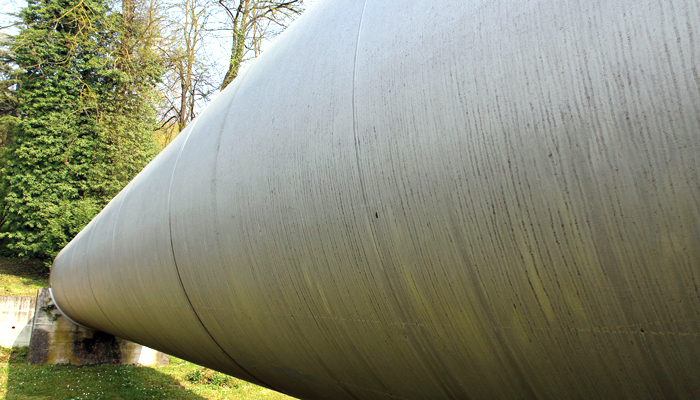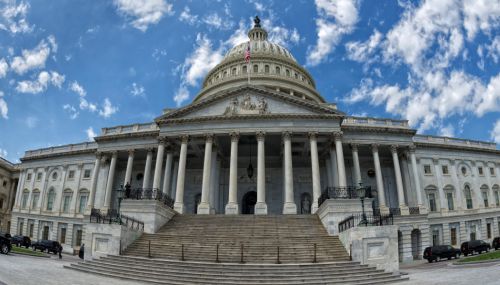All
The Time Is Right for More Storage
by Bruce Montroy, Bergquist Inc.

There seems to be plenty of propane to go around this heating season, but then again this winter has been quite a bit warmer than average in most parts of the country. Would there have been enough propane if this winter was more like the one we had the last two years? Or even an average winter? The answer is: Maybe.
Conversations with propane marketers reveal that while propane is plentiful and prices are low, much of the propane available is in the wrong part of the country. It could be tough to reach consumers if temperatures were to take an extended dip. There are complaints of some refiners and processing plants being down and not enough product in pipelines. In some areas, there is no spot market fuel, as everything has been contracted.
But new rail terminals have opened and are planned to help get product where it’s needed. Propane production projections remain robust for the foreseeable future. If the price of crude were to increase to a point that shale exploration starts again, there will be even more propane. No worries, right?
The Impact of Exports
Propane production in the United States has grown to the point that we’ve become a net exporter. The U.S. is part of the world market now. New export terminals have opened, and more are planned to open soon. The expanded Panama Canal will allow more propane shipments to reach growing energy markets in Asia.
This means propane exports will continue to increase as long as markets overseas are more profitable (and expensive) than those in the U.S. Propane is going to go where the money is until price is equal both here and abroad. All of this is going to present some new challenges for propane marketers at home.
There are other roadblocks, literally, that hinder the movement of propane to where it is needed. Murphy’s Law seems to always ring true: The weather is always the worst when you need product the most. Snow storms close highways, so transports can’t get through. Lines are long at terminals, delaying shipments. You can have all of the contracts that you need, but if you can’t get the product where you need it, what good is the contract?
To top it all off, customers don’t want to hear all of the reasons why they may not be able to get their propane. They just want to be warm. The best way to keep a loyal customer base is to keep them warm and their water hot. Oddly enough, if they never have to think about you, then you’ve done a good job.
So, the best way to make sure that you keep them warm is to have enough storage on hand. Keep it full for when times get tough. Having enough storage, either at your main facility or satellite locations, is the best way to assert your independence. Counting on producers to ensure there is enough product is fine until they can get more money for it overseas. Buy it low and put it in your storage – at least a good percentage of it anyway.
As long as you are reliant on pipelines, rail lines, or transport lines, you roll the dice when it’s time to really deliver propane. The times have changed, and you can longer count on everything to fall into place neat and tidy like it used to be. You cannot count on all of the outside influences to help maintain goodwill with your customers.
How Much Capacity?
There are all kinds of opinions as to how much storage is enough. A good rule of thumb is to prepare for enough product for an entire seven days during your busiest week of the year. It could happen. It has happened. Maybe 10 days is better. Having that much product on hand could buy the time needed to keep you out of the local news. A couple of weeks of bad press can affect a business for a long time.
The cost to add a 30,000-gallon tank to an existing plant is in the $100,000 neighborhood – less if you scour the markets for a good used tank. It doesn’t take long to pay that off by being able to buy more product when the cost is low and put it in your storage until needed. You pay your own storage cost as well, with no extra added fees.
Giant shopping malls are built for the business that retailers get the last two months of the year. Huge NFL stadiums are built for eight home games a season, nine or 10 if they’re lucky. They don’t average the crowd out over the other 46 weeks and build accordingly. With the propane game changing, it’s time to build for when your customers need you the most.
Related Posts
 National Energy Choice Legislation Advances Through Committee
National Energy Choice Legislation Advances Through Committee
Posted on November 20, 2025
 New and Improved: NEFI Member Benefits Deliver More Value
New and Improved: NEFI Member Benefits Deliver More Value
Posted on October 17, 2025
 It’s Upgrade Season. Get the Sale.
It’s Upgrade Season. Get the Sale.
Posted on October 16, 2025
 The Value of Providing Value
The Value of Providing Value
Posted on October 16, 2025
Enter your email to receive important news and article updates.
